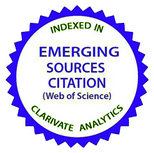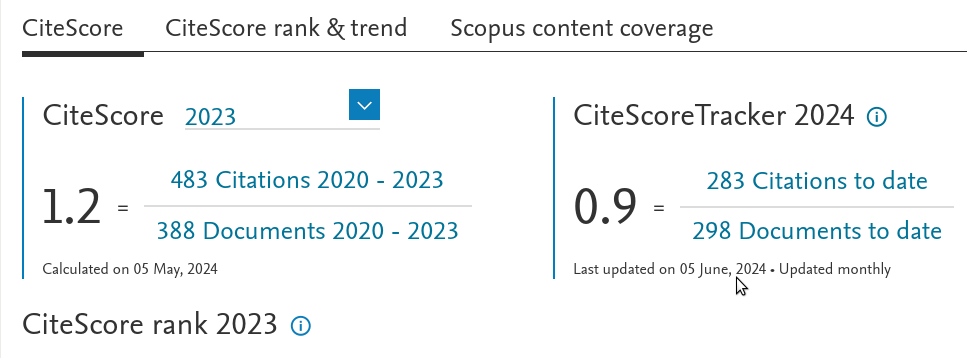Іонізація та збудження молекул урацилу електронним ударом
DOI:
https://doi.org/10.15407/ujpe57.7.752Ключові слова:
-Анотація
Експериментальним шляхом отримано дані про абсолютні величини перерізів утворення позитивних і негативних іонів азотистої основи
нуклеїнових кислот – урацилу. Показано, що максимальних значень переріз утворення негативних іонів досягає при енергії бомбардуючих
електронів 1,1 еВ, і його абсолютна величина становить 5,0 · 10–18 cм2. Визначено абсолютну величину та енергетичну залежність перерізу утворення позитивних іонів для урацилу в інтервалі енергій електронів від порога до 200 еВ. Максимум перерізу іонізації знаходиться при енергії 95 еВ і дорівнює (1,0 ± 0,1) · 10–15 cм2. Отримано спектри люмінесценції ізольованих молекул урацилу в області довжин хвиль 200–500 нм під дією повільних електронів. У спектрі спостерігаються близько 20 спектральних смуг і ліній. Показано, що спектр випромінювання урацилу формують процеси дисоціативного збудження молекул, дисоціативного збудження з іонізацією, збудження електронних рівнів вихідної молекули та молекулярного іона. Обговорено біофізичні наслідки отриманих результатів.
Посилання
M.I. Sukhoviya and I.I. Shafranyosh, in Mechanisms of Radiation-Indiced Damage and Recovery of Nucleic Acids (Pushchino Sci. Center of the RAS, Pushchino-na-Oke, 1980), p. 51 (in Russian).
M.I. Sukhoviya, V.N. Slavik, I.I. Shafranyosh, and L.L. Shimon, Biopolim. Klet. 7, 77 (1991).
https://doi.org/10.7124/bc.000302
M.I. Sukhoviya, M.I. Shafranyosh, and I.I. Shafranyosh, in Spectroscopy of Biological Molecules: New Directions (Kluwer, Dordrecht, 1999), p. 281.
https://doi.org/10.1007/978-94-011-4479-7_124
V. Cobut, Y. Frongillo, J.P. Patau, T. Goulet, M.J. Fraser, and J.P. Jay-Gerin, Radiat. Phys. Chem. 51, 229 (1998).
I.I. Shafranyosh, M.I. Sukhoviya, and M.I. Shafranyosh, J. Phys. B 39, 4155 (2006).
https://doi.org/10.1088/0953-4075/39/20/013
I.I. Shafranyosh, M.I. Sukhoviya, M.I. Shafranyosh, and L.L. Shimon, Zh. Tekhn. Fiz. 78, No. 12, 7 (2008).
I.I. Shafranyosh and M.I. Sukhoviya, Opt. Spektrosk. 102, 553 (2007).
https://doi.org/10.1134/S0030400X07040042
L.V. Gurvich, G.V. Karachevtsev, V.N. Kondrat'ev, Yu.A. Lebedev, V.A. Medvedev, V.K. Potapov, and Yu.S. Khodeev, Energies of Chemical Bond Breaking. Ionization Potentials and Electron Affinity (Nauka, Moscow, 1974) (in Russian).
G. Hanel, B. Gstir, S. Denifl {it et al., Phys. Rev. Lett. 90, 188104 (2003).
https://doi.org/10.1103/PhysRevLett.90.188104
S. Steenken , J.P. Telo, H.M. Novais, and L.P. Candeias, J. Am. Chem. Soc. 114, 4701 (1992).
https://doi.org/10.1021/ja00038a037
R.A. Khmel'nitskii and B.P. Terent'ev, Usp. Khim. 48, 854 (1979).
A.A. Polyakova, Molecular Mass Spectrometric Analysis of Organic Compounds (Khimiya, Moscow, 1973) (in Russian).
S. Feil, K. Gluch, S. Matt-Leuber, P. Scheier, J. Limtrakul, M. Probst, H. Deutsh, K. Becker, A. Stamatovic, and T.D. Mark, J. Phys. B 37, 3013 (2004).
https://doi.org/10.1088/0953-4075/37/15/001
NIST Standard Reference Database. Webpage 14. [http://webbook.nist.gov/chemistry]; AIST Spectral Database for Organic Compounds
[http://riodb01.ibase.aist.go.jp/sdbs/cgi-bin/direct_frame_top.cgi]
M.I. Shafranyosh, Nauk. Visnyk Uzhgorod. Univ. Ser. Fiz. 25, 208 (2009).
H. Deutsch, K. Becker, S. Matt, and T.D. Mark, Plasma Phys. Control. Fusion 40, 1721 (1998).
https://doi.org/10.1088/0741-3335/40/10/005
H. Deutsch, P. Scheier, S. Matt-Leubner, K. Becker, and T.D. Mark, Int. J. Mass Spectr. 243, 215 (2005).
https://doi.org/10.1016/j.ijms.2005.03.003
H.A. Bethe, Intermediate Quantum Mechanics (Benjamin, New York, 1964).
N.F. Mott and H.S.W. Massey, The Theory of Atomic Collisions (Oxford Univ. Press, Oxford, 1965).
I.P. Vinogradov, V.V. Zemskikh, and N.Ya. Dodonova, Opt. Spektrosk. 36, 596 (1974).
K.P. Huber and G. Herzberg, Molecular Spectra and Molecular Structure IV: Constants of Diatomic Molecules (Van Nostrand, New York, 1979).
https://doi.org/10.1007/978-1-4757-0961-2
G. Herzberg, Molecular Spectra and Molecular Structure I: Spectra of Diatomic Molecules (Van Nostrand, New York, 1950).
R.W. Pearse and A.G. Gaydon, The Identification of Molecular Spectra (Chapman and Hall, London, 1976).
https://doi.org/10.1007/978-94-009-5758-9
V.V. Skubenich, M.M. Povch, and I.P. Zapesochnyi, in Abstracts of the 7th All-Union Conference on Physics of Electron and Atomic Collisions (Petrozavodsk, 1978), Pt. 1, p. 102.
H.-W. Johims, M. Schwel, H. Baumgartel, and S. Leach, Chem. Phys. 215, 263 (2005).
##submission.downloads##
Опубліковано
Як цитувати
Номер
Розділ
Ліцензія
Ліцензійний Договір
на використання Твору
м. Київ, Україна
Відповідальний автор та співавтори (надалі іменовані як Автор(и)) статті, яку він (вони) подають до Українського фізичного журналу, (надалі іменована як Твір) з одного боку та Інститут теоретичної фізики імені М.М. Боголюбова НАН України в особі директора (надалі – Видавець) з іншого боку уклали даний Договір про таке:
1. Предмет договору.
Автор(и) надає(ють) Видавцю безоплатно невиключні права на використання Твору (наукового, технічного або іншого характеру) на умовах, визначених цим Договором.
2. Способи використання Твору.
2.1. Автор(и) надає(ють) Видавцю право на використання Твору таким чином:
2.1.1. Використовувати Твір шляхом його видання в Українському фізичному журналі (далі – Видання) мовою оригіналу та в перекладі на англійську (погоджений Автором(ами) і Видавцем примірник Твору, прийнятого до друку, є невід’ємною частиною Ліцензійного договору).
2.1.2. Переробляти, адаптувати або іншим чином змінювати Твір за погодженням з Автором(ами).
2.1.3. Перекладати Твір у випадку, коли Твір викладений іншою мовою, ніж мова, якою передбачена публікація у Виданні.
2.2. Якщо Автор(и) виявить(лять) бажання використовувати Твір в інший спосіб, як то публікувати перекладену версію Твору (окрім випадку, зазначеного в п. 2.1.3 цього Договору); розміщувати повністю або частково в мережі Інтернет; публікувати Твір в інших, у тому числі іноземних, виданнях; включати Твір як складову частину інших збірників, антологій, енциклопедій тощо, то Автор(и) мають отримати на це письмовий дозвіл від Видавця.
3. Територія використання.
Автор(и) надає(ють) Видавцю право на використання Твору способами, зазначеними у п.п. 2.1.1–2.1.3 цього Договору, на території України, а також право на розповсюдження Твору як невід’ємної складової частини Видання на території України та інших країн шляхом передплати, продажу та безоплатної передачі третій стороні.
4. Строк, на який надаються права.
4.1. Договір є чинним з дати підписання та діє протягом усього часу функціонування Видання.
5. Застереження.
5.1. Автор(и) заявляє(ють), що:
– він/вона є автором (співавтором) Твору;
– авторські права на даний Твір не передані іншій стороні;
– даний Твір не був раніше опублікований і не буде опублікований у будь-якому іншому виданні до публікації його Видавцем (див. також п. 2.2);
– Автор(и) не порушив(ли) права інтелектуальної власності інших осіб. Якщо у Творі наведені матеріали інших осіб за виключенням випадків цитування в обсязі, виправданому науковим, інформаційним або критичним характером Твору, використання таких матеріалів здійснене Автором(ами) з дотриманням норм міжнародного законодавства і законодавства України.
6. Реквізити і підписи сторін.
Видавець: Інститут теоретичної фізики імені М.М. Боголюбова НАН України.
Адреса: м. Київ, вул. Метрологічна 14-б.
Автор: Електронний підпис від імені та за погодження всіх співавторів.













